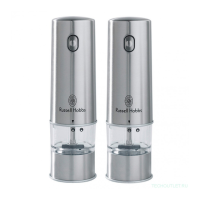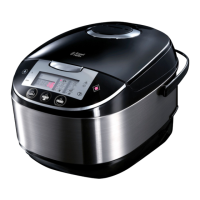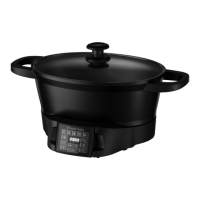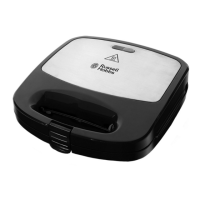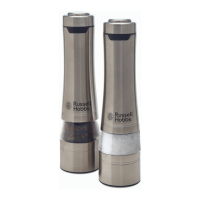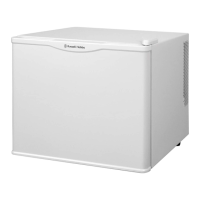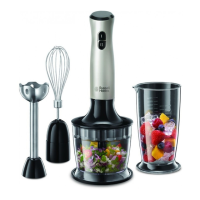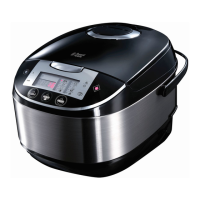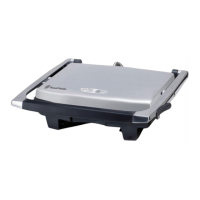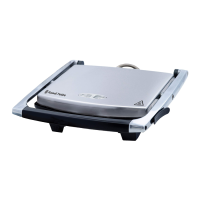Care and Cleaning
1. Unplug the Breadman™ and let it to cool down fully before cleaning.
2. Open the lid. If you want to remove the lid, open and lift it gently at the same time. As it
approaches about 45° the right hinge tab will align with the slot, and you’ll be able to pull the lid
out of the hinge. To replace it, tilt the lid back about 45°, put the left hinge tab into the left side of
the hinge, then put the right hinge tab into the slot.
3. If the kneading arm has stuck on to the shaft, fill the loaf tin with warm water. This should soften
any dough residues and allow the kneading arm to be removed. Don’t leave it to soak.
4. If the inside of the kneading arm gets clogged with flour, soak it in warm water and then dig out
the flour with a wooden cocktail stick.
5. Wash the loaf tin and kneading arm in warm soapy water, rinse, then dry thoroughly.
6. Wipe all other surfaces, internal and external, with a damp cloth. Use a little washing-up liquid if
necessary, but be sure to clean it all off, otherwise it might taint the next lot of bread.
7. Make sure everything is dry before reusing the Breadman™ or storing it away.
8. Don’t immerse the Breadman™ in water or any other liquid.
9. Do not use bleach or other abrasive substance or solvents to clean your appliance as it can be
damaging to the finish.
10. To remove stubborn spots/marks, wipe the surfaces with a cloth slightly dampened in soapy water
or mild non-abrasive cleaner. Dry with a clean and soft cloth.
11. Don’t put any of the parts in a dishwasher.
Recipes
There are many external factors which can affect the taste and texture of your bread (e.g. yeast type,
flour type, sugar type, kitchen temperature, even air pressure and height above sea level).
The recipes supplied have been designed to produce edible results, regardless of external factors. Use
them to get the hang of the machine.
Then you can start to have real fun with it. Use the recipes as a guide, but vary the ingredients, vary the
quantities, taste the results. Keep notes, write down what changes you make, and you’ll build up a range
of recipes which suit your taste. Keep notes of the not-so-successful ones too, so you know what not to
do next time.
If you already have bread recipes, or find recipes in other publications, compare them with the recipes
given here, to find out which program to try first, then experiment till the results match your desires.
Be careful with quantities when using other recipes. Don’t fill the loaf tin above about a quarter full,
certainly not as much as a third full. If you overfill it, the rising bread may push the lid off.
That’s on a good day. On a bad day, it’ll spill over the side, burn on to the element and clog the drive.
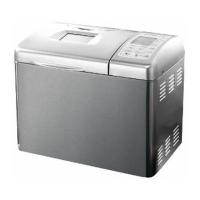
